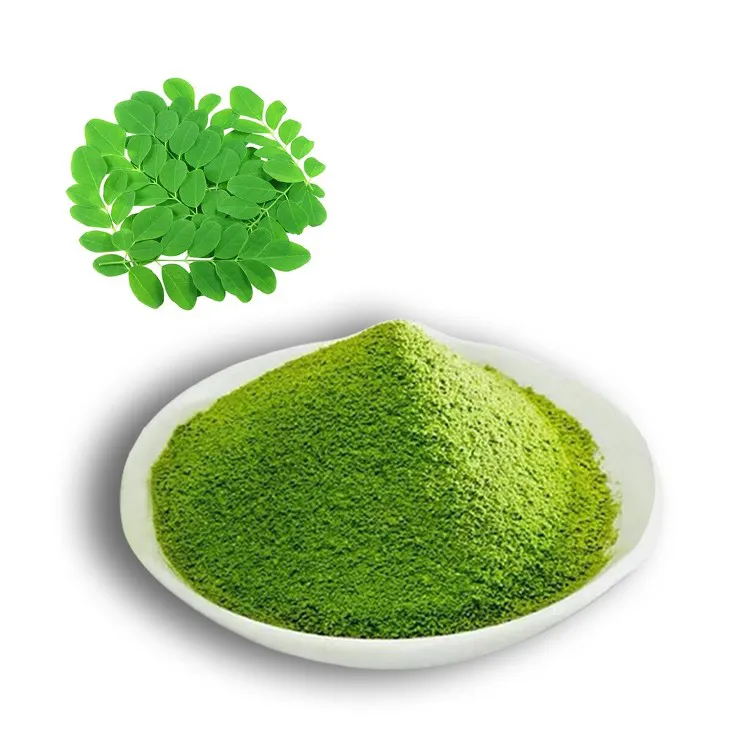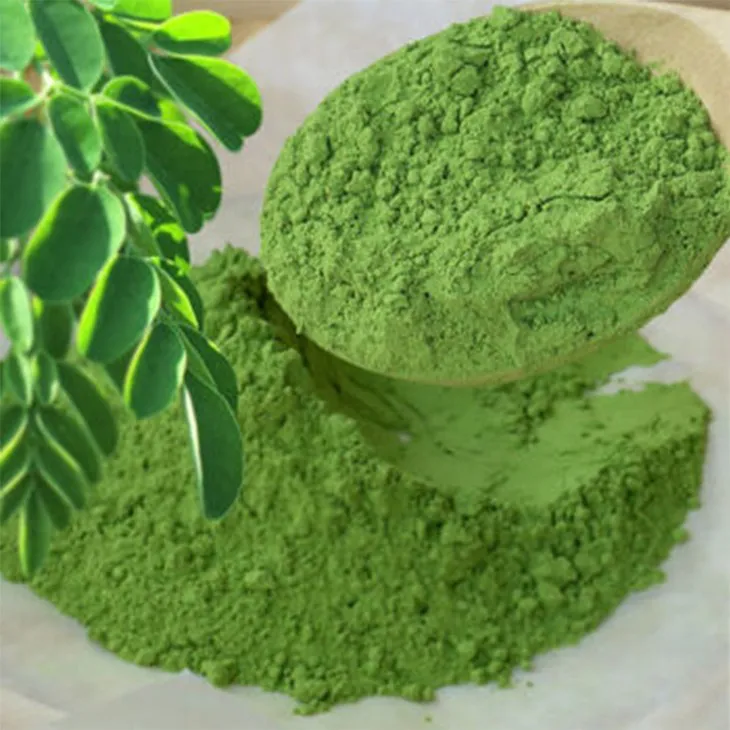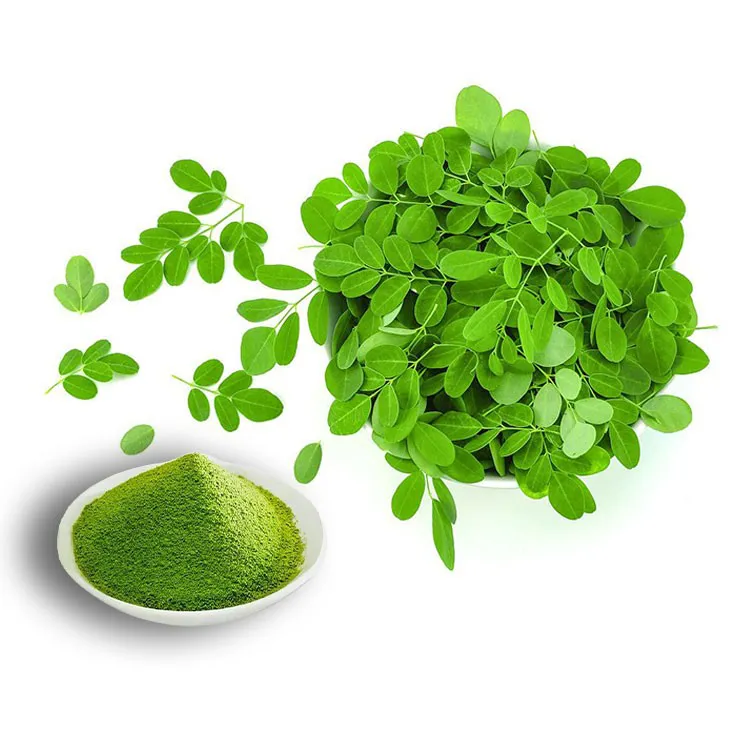- 0086-571-85302990
- sales@greenskybio.com
Moringa powder extraction technology and production process
2024-11-28

1. Introduction to Moringa
Moringa, also known as the "miracle tree," is a highly nutritious plant native to parts of Africa and Asia. It has been used for centuries in traditional medicine and as a food source due to its rich content of vitamins, minerals, amino acids, and antioxidants. The extraction of Moringa powder aims to preserve these valuable nutrients for various applications in the food, pharmaceutical, and cosmetic industries.

2. Harvesting of Moringa
2.1. Timing
The harvesting time of Moringa is crucial. It is typically harvested when the leaves are young and tender, usually within 1 - 3 months after sowing. At this stage, the leaves contain the highest levels of nutrients.
2.2. Method
The leaves can be hand - picked or mechanically harvested. Hand - picking is more common for small - scale production as it allows for the selection of only the best - quality leaves. However, mechanical harvesting can be more efficient for large - scale operations.

3. Pretreatment before extraction
3.1. Cleaning
Once harvested, the Moringa leaves need to be thoroughly cleaned. This involves removing dirt, debris, and any foreign matter. Washing with clean water multiple times is a common practice.
3.2. Drying
After cleaning, the leaves are dried. There are two main drying methods: sun - drying and mechanical drying.
- Sun - drying: This is a traditional and cost - effective method. The leaves are spread out in a clean, dry area and exposed to sunlight for several days until they are completely dry. However, this method is dependent on weather conditions and may not be suitable for large - scale production.
- Mechanical drying: Using drying machines such as hot - air dryers can speed up the drying process. The temperature and humidity can be controlled, ensuring consistent drying quality. This method is more suitable for industrial - scale production.

4. Extraction methods
4.1. Solvent extraction
Solvent extraction is a commonly used method. Organic solvents such as ethanol or hexane can be used.
- The dried Moringa leaves are ground into a fine powder.
- The powder is then mixed with the solvent in a specific ratio. For example, a ratio of 1:5 (powder:solvent) may be used.
- The mixture is stirred continuously for a certain period, usually several hours, to allow the nutrients in the leaves to dissolve into the solvent.
- After that, the mixture is filtered to separate the solvent - containing the dissolved nutrients from the solid residue.
4.2. Press extraction
Press extraction is a more natural and environmentally friendly method.
- The dried Moringa leaves are first crushed into a coarse powder.
- The powder is then placed in a press machine. High pressure is applied to squeeze out the oil and other liquid components from the leaves.
- The extracted liquid contains a significant amount of nutrients and can be further processed to obtain the Moringa powder.
5. Purification steps
5.1. Filtration
Whether using solvent extraction or press extraction, filtration is an important purification step.
- For solvent - based extraction, after separating the solvent - nutrient mixture from the solid residue, further filtration may be required to remove any remaining fine particles or impurities in the solvent. This can be achieved using filter papers, membranes, or filter cartridges with different pore sizes.
- In the case of press extraction, the extracted liquid may also contain some solid particles. Filtration can help to obtain a clear liquid for further processing.
If solvent extraction is used, after filtration, the solvent needs to be removed to obtain the pure Moringa extract. Evaporation is a common method for this purpose.
- The solvent - nutrient mixture is placed in an evaporation vessel. Heat is applied gently to vaporize the solvent while keeping the temperature low enough to avoid damaging the nutrients.
- The evaporated solvent can be recovered and recycled, which helps to reduce costs and environmental impact.
6. Machinery used in the production process
6.1. Grinding machines
Grinding machines are used to convert the harvested Moringa leaves into powder. There are different types of grinding machines available, such as hammer mills and ball mills.
- Hammer mills are suitable for coarse grinding. They work by using hammers to break down the leaves into smaller pieces. They are relatively inexpensive and can handle a large amount of material at a time.
- Ball mills are more suitable for fine grinding. They use balls to grind the material into a very fine powder. The grinding process in ball mills is more controlled and can produce a more uniform powder.
As mentioned earlier, drying machines play an important role in the production process. Hot - air dryers are commonly used. They can be adjusted to different temperatures and airflows to achieve optimal drying conditions. Some advanced drying machines also have features such as humidity control and automatic shutdown when the drying is complete.
6.3. Press machines
In the case of press extraction, press machines are essential. There are hydraulic press machines and screw press machines.
- Hydraulic press machines can apply very high pressure, which is suitable for extracting a large amount of oil and liquid from the Moringa leaves. They are often used in large - scale production.
- Screw press machines are more compact and can be used for smaller - scale operations. They work by using a screw to compress the material and extract the liquid.
Filtration equipment includes filter papers, filter membranes, and filter cartridges. Filter papers are simple and cost - effective for initial filtration. Filter membranes, such as microfiltration and ultrafiltration membranes, can be used for more precise filtration to remove smaller particles. Filter cartridges are convenient for large - scale filtration as they can be easily replaced and have a large filtration area.
6.5. Evaporation equipment
Evaporation equipment such as rotary evaporators is often used. Rotary evaporators can rotate the evaporation flask to increase the surface area of the liquid - solvent mixture, which speeds up the evaporation process. They also have a condenser to recover the evaporated solvent.
7. Final product formation - Moringa powder
After the purification steps, the remaining extract is further processed to form Moringa powder.
7.1. Spray drying
Spray drying is a common method for converting the liquid extract into powder.
- The purified extract is first made into a fine spray using a spray nozzle.
- The spray is then introduced into a drying chamber where hot air is blown. The hot air quickly dries the spray, converting it into a powder.
- The resulting powder is then collected and packaged.
Freeze - drying is another option, especially for preserving the heat - sensitive nutrients in Moringa.
- The extract is first frozen at a very low temperature.
- The frozen extract is then placed in a vacuum chamber where the ice is directly sublimated into water vapor without passing through the liquid phase. This process preserves the structure and nutrients of the Moringa extract very well.
- The resulting freeze - dried product can be ground into a powder if necessary and then packaged.
8. Quality control in the production process
8.1. Nutrient analysis
Regular nutrient analysis is essential to ensure that the Moringa powder contains the expected levels of vitamins, minerals, amino acids, and antioxidants. Analytical methods such as HPLC (High - Performance Liquid Chromatography) and spectroscopy can be used to measure the nutrient content accurately.
8.2. Microbiological testing
Microbiological testing is carried out to check for the presence of harmful bacteria, fungi, and other microorganisms. This includes tests for total plate count, Escherichia coli, Salmonella, etc. If any contaminants are detected, appropriate measures such as sterilization or re - processing need to be taken.
8.3. Residue analysis
In the case of solvent extraction, residue analysis is crucial to ensure that there are no harmful solvent residues in the final product. Gas chromatography - mass spectrometry (GC - MS) can be used to detect and quantify any solvent residues.
9. Applications of Moringa powder
9.1. Food industry
Moringa powder can be used as a nutritional supplement in various food products. It can be added to smoothies, baked goods, and energy bars. It is also used in the production of functional foods due to its health - promoting properties.
9.2. Pharmaceutical industry
In the pharmaceutical industry, Moringa powder can be used as an ingredient in herbal medicines. Its antioxidant and anti - inflammatory properties make it potentially useful for treating various diseases.
9.3. Cosmetic industry
Moringa powder is used in cosmetics for its moisturizing and skin - nourishing properties. It can be found in creams, lotions, and face masks.
10. Conclusion
The extraction technology and production process of Moringa powder involve multiple steps, from harvesting to final product formation. Each step, including the choice of extraction method, purification steps, and machinery used, has an impact on the quality of the final Moringa powder. With proper quality control, Moringa powder can be produced in a pure and effective form for various applications in different industries.
FAQ:
What are the main steps in the Moringa powder extraction process?
The main steps in the Moringa powder extraction process typically include harvesting fresh Moringa leaves, washing them thoroughly to remove dirt and impurities. Then, the leaves are dried, either through sun - drying or using a drying machine. After drying, the leaves are ground into a fine powder. There may also be purification steps involved to ensure the quality of the powder.
What machinery is commonly used in Moringa powder production?
Commonly used machinery in Moringa powder production includes drying machines such as tray dryers or fluidized - bed dryers for drying the Moringa leaves. For grinding the dried leaves into powder, a grinder or a pulverizer is used. Some large - scale production may also involve conveyor belts for transporting the leaves during different stages of the process.
What are the key purification steps in Moringa powder extraction?
The key purification steps may involve sieving the ground powder to remove larger particles or debris. In some cases, there could be a process of air - classification to separate lighter impurities from the powder. Additionally, washing the leaves before drying carefully can also be considered as an initial purification step.
How is the quality of Moringa powder ensured during the production process?
To ensure the quality of Moringa powder during production, strict control over the harvesting time of Moringa leaves is important. Only healthy and mature leaves should be harvested. During drying, the temperature and time should be carefully monitored to prevent over - drying or under - drying which can affect the quality. The purification steps need to be carried out thoroughly. Regular quality checks such as testing for moisture content, nutrient content, and absence of contaminants are also necessary.
What are the applications of Moringa powder?
Moringa powder has various applications. In the food industry, it can be used as a nutritional supplement in smoothies, baked goods, and other food products due to its rich nutrient content. In the cosmetic industry, it may be used in skin - care products as it contains components that are beneficial for the skin. In traditional medicine, it has been used for its potential health - promoting properties such as anti - inflammatory and antioxidant effects.
Related literature
- Advanced Techniques in Moringa Powder Extraction and Its Nutritional Analysis"
- "Optimizing the Production Process of Moringa Powder for Maximum Nutrient Retention"
- "The Role of Machinery in High - Quality Moringa Powder Production"
- ▶ Hesperidin
- ▶ citrus bioflavonoids
- ▶ plant extract
- ▶ lycopene
- ▶ Diosmin
- ▶ Grape seed extract
- ▶ Sea buckthorn Juice Powder
- ▶ Beetroot powder
- ▶ Hops Extract
- ▶ Artichoke Extract
- ▶ Reishi mushroom extract
- ▶ Astaxanthin
- ▶ Green Tea Extract
- ▶ Curcumin Extract
- ▶ Horse Chestnut Extract
- ▶ Other Problems
- ▶ Boswellia Serrata Extract
- ▶ Resveratrol Extract
- ▶ Marigold Extract
- ▶ Grape Leaf Extract
- ▶ blog3
- ▶ blog4
-
100% Organic Sugarcane Extract.
2024-11-28
-
Organic Ginseng Leaf Extract Powder Supplier
2024-11-28
-
The Most Worth - Buying Pure Lemon Extract.
2024-11-28
-
100% Pure Organic Dandelion Leaf Extract.
2024-11-28
-
Buckthorn bark extract
2024-11-28
-
Mulberry leaf Extract
2024-11-28
-
Natural grape seed extract
2024-11-28
-
Red Wine Extract
2024-11-28
-
Thunder God Vine Extract
2024-11-28
-
Fenugreek Extract Powder
2024-11-28
-
Tongkat Ali Extract Powder
2024-11-28
-
Horse Chestnut Extract
2024-11-28
-
Konjac Powder
2024-11-28
-
Centella Asiatica Extract
2024-11-28





















